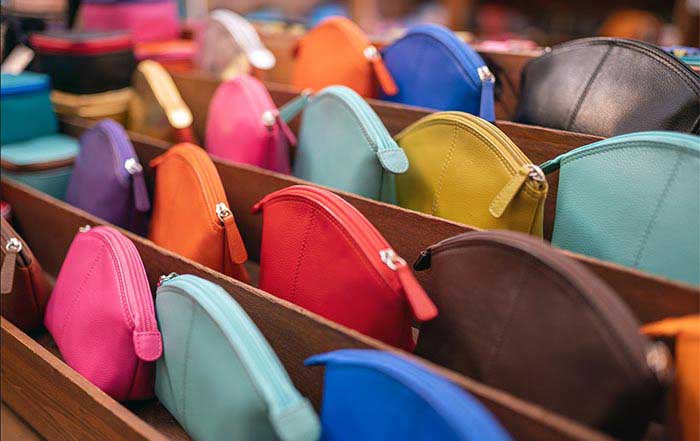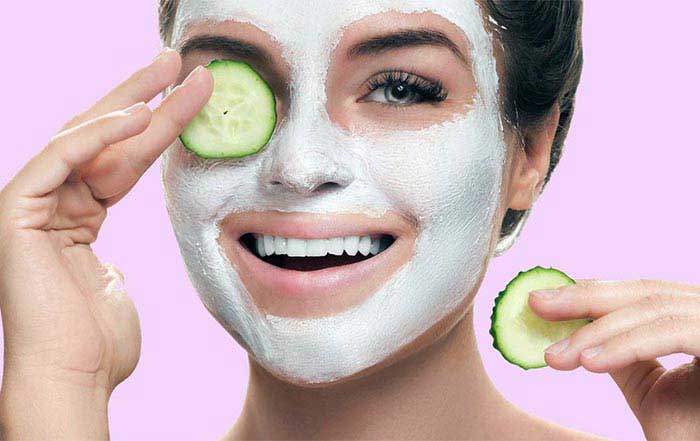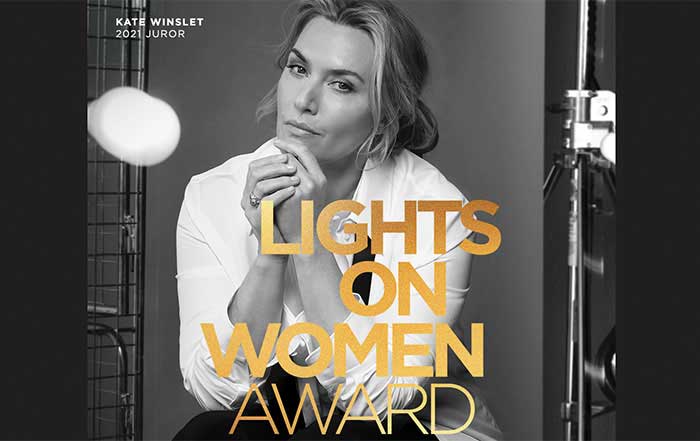Sleep is more than just rest; it is a cornerstone of health, vitality, and emotional balance. For women in particular, achieving restorative sleep is often complicated by biological, psychological, and societal factors. From hormonal shifts during menstrual cycles, pregnancy, and menopause, to the demands of modern professional and family life, women frequently encounter barriers that keep them from enjoying the full benefits of restorative sleep. With stress levels seemingly rising worldwide and technology increasingly intruding into personal time, the pursuit of blissful sleep has never been more relevant. This article serves as an authoritative guide for women on how to achieve deeper, healthier, and more consistent rest, blending medical expertise, lifestyle strategies, and mindful practices.
The Unique Sleep Challenges Women Face
Women’s sleep patterns are intricately connected to their physiology. Hormonal fluctuations throughout the menstrual cycle, pregnancy, and menopause can all influence the quality and duration of sleep. For instance, studies have shown that women are more prone to insomnia than men, especially during perimenopause, due to changes in estrogen and progesterone. Additionally, cultural expectations of women as caregivers—whether for children, partners, or aging parents—often compound stress and reduce available hours for rest.
Beyond biological differences, women are more likely to experience stress-related sleep disturbances. According to the World Health Organization, women report higher rates of anxiety and depression, both of which are strongly linked to disrupted sleep. This intersection of hormonal, social, and emotional influences makes sleep a uniquely pressing health concern for women.
For readers of HerStage Lifestyle, it is essential to recognize these unique challenges not as weaknesses but as reminders of the importance of prioritizing sleep as part of self-care and long-term health.
Why Quality Sleep Matters for Women’s Health
Quality sleep affects every facet of life, from mental clarity and emotional resilience to physical well-being and long-term disease prevention. Women who consistently achieve deep, restorative sleep are more likely to maintain healthy body weight, experience better hormonal balance, and reduce risks of cardiovascular disease and diabetes.
Cognitive function also depends heavily on adequate rest. Sleep is the brain’s time to process information, consolidate memories, and clear away neurotoxic waste. For women balancing careers, leadership roles, and family responsibilities, this mental reset is vital. Studies published by the National Institutes of Health demonstrate that women who sleep fewer than seven hours per night show diminished problem-solving ability, slower reaction times, and impaired decision-making—effects that accumulate over time.
On an emotional level, insufficient sleep increases vulnerability to mood disorders. Women already experience higher rates of anxiety and depression, and the link between poor sleep and heightened emotional distress is now well-established. Simply put, prioritizing sleep is not a luxury; it is a health strategy that empowers women to thrive in work, relationships, and personal growth. To further explore the connection between wellness and empowerment, readers can visit HerStage Leadership.
The Science of Sleep Cycles
Understanding the stages of sleep can help women optimize their rest. Human sleep is divided into non-REM and REM phases, each of which serves different restorative purposes. Non-REM stages are responsible for physical recovery, tissue repair, and immune function, while REM sleep is essential for memory consolidation, creativity, and emotional regulation.
Women tend to experience slightly longer sleep duration than men on average, yet paradoxically report feeling less rested. Researchers attribute this to more frequent disruptions during the night, often caused by hormonal changes, stress, or caregiving responsibilities. Knowing how sleep cycles operate allows women to focus on creating environments and routines that maximize both non-REM and REM sleep.
Organizations like the American Academy of Sleep Medicine recommend at least seven to nine hours of uninterrupted sleep for adults, but the quality of those hours is just as important as the quantity. Ensuring deeper, less fragmented cycles is the goal of any sleep-improvement plan. Learn more about how healthy habits affect rest at HerStage Health.
Hormones and Their Role in Sleep
Hormonal balance plays a significant role in sleep regulation for women. Estrogen, for example, has a protective effect on sleep by reducing the likelihood of sleep apnea and supporting REM cycles. Progesterone, often called the "calming hormone," has sedative properties that can help with falling asleep. However, fluctuations in these hormones during different life stages frequently disrupt rest.
During menstruation, many women report heightened insomnia, restless legs, or vivid dreams due to hormonal dips combined with physical discomfort. Pregnancy introduces new challenges, such as increased urination, back pain, or anxiety about childbirth, all of which contribute to fragmented sleep. Menopause is perhaps the most disruptive stage, with hot flashes and night sweats often causing multiple awakenings each night.
Recognizing these patterns allows women to adopt targeted strategies. For example, cooling mattresses and breathable sleepwear may ease menopausal sleep issues, while prenatal yoga and mindfulness practices may support rest during pregnancy. Resources such as the National Sleep Foundation provide evidence-based insights tailored to women’s needs.
Sleep Wellness Assessment
Discover your personalized sleep improvement plan
How many hours of sleep do you typically get per night?
Lifestyle Choices That Impact Sleep
In addition to hormonal and biological influences, lifestyle decisions play a crucial role in determining sleep quality. Caffeine and alcohol consumption, irregular schedules, high-stress jobs, and excessive screen time all contribute to disrupted sleep patterns. In today’s digital age, women are often connected to devices late into the night, exposing themselves to blue light that suppresses melatonin production.
Physical activity, on the other hand, has been consistently shown to improve sleep. Engaging in regular aerobic exercise such as walking, swimming, or cycling helps regulate circadian rhythms, reduce stress hormones, and promote deeper stages of non-REM sleep. However, high-intensity workouts too close to bedtime may overstimulate the nervous system, delaying sleep onset.
Nutrition is another important factor. Diets rich in magnesium, tryptophan, and vitamin B6 support the natural production of melatonin. Foods like almonds, bananas, and fatty fish contribute to this effect. Women interested in combining diet with wellness can explore related insights on HerStage Food.
Stress, Anxiety, and Sleep Disruption
Stress is arguably the most common barrier to blissful sleep among women today. Professional demands, caregiving roles, and societal pressures combine to create chronic stress that undermines the ability to fall and stay asleep. Anxiety and rumination often intensify at night, when external distractions are minimal, leading to prolonged wakefulness and poor-quality rest.
Mindfulness techniques such as meditation, deep breathing, and progressive muscle relaxation have proven effective in reducing nighttime stress. Practices like yoga nidra or guided imagery also offer pathways to calming the nervous system before bed. The Mayo Clinic emphasizes that cognitive behavioral therapy for insomnia (CBT-I) remains the gold standard for chronic sleep difficulties, particularly when caused by stress and anxiety.
For readers seeking actionable strategies to regain control over their rest, the resource HerStage Mindfulness offers guidance on integrating calming practices into daily life.
The Role of Sleep Environment
A woman’s sleep environment is often overlooked but can significantly influence the ability to achieve restorative rest. Elements such as mattress quality, room temperature, noise levels, and lighting play critical roles. Research consistently shows that a cool, dark, and quiet room promotes deeper sleep.
Technology can be used thoughtfully to enhance the environment rather than disrupt it. White noise machines, blackout curtains, and smart thermostats are valuable tools. The rise of sleep-tracking devices also offers insights into sleep cycles, though experts caution against over-reliance, as obsessing over data can paradoxically cause more anxiety and worsen sleep quality.
Women interested in creating a personal sanctuary may benefit from exploring wellness-related design principles highlighted on HerStage Self-Improvement, which emphasizes aligning lifestyle and environment with overall well-being.
Creating a Consistent Sleep Routine
Consistency is the foundation of healthy sleep, and yet it is one of the most challenging habits to adopt. Many women juggle fluctuating schedules, from early-morning work commitments to late-night family obligations, making it difficult to maintain regular sleep and wake times. However, aligning with the body’s natural circadian rhythm—its internal 24-hour clock—creates the most favorable conditions for restorative rest.
Experts recommend going to bed and waking up at the same time each day, even on weekends. This helps regulate the release of melatonin and cortisol, hormones that signal the body when it is time to sleep and when it is time to wake. By building this routine, women can strengthen their sleep drive, making it easier to fall asleep quickly and stay asleep throughout the night.
Incorporating rituals before bedtime can also signal to the body that it is time to rest. Gentle stretching, herbal teas such as chamomile or valerian root, and reading in dim light all help transition the mind and body away from daily stress. Readers can find additional strategies for improving everyday routines on HerStage Guide.
Technology and Sleep: Finding Balance
In the modern era, technology plays a double role—it can both disrupt and support sleep. Smartphones, laptops, and televisions often emit blue light that interferes with melatonin production, delaying the onset of sleep. Many women, particularly professionals, feel compelled to remain connected to work emails and messages late into the evening, blurring the boundaries between professional and personal time.
Practical steps such as enabling blue-light filters, using apps designed to reduce evening screen exposure, or setting digital curfews can minimize the negative impact. Conversely, technology can also support better rest. Sleep tracking apps, meditation programs, and relaxation soundscapes provide valuable tools for winding down and monitoring progress. Devices such as smart lighting systems, which gradually dim to mimic sunset, create a more natural transition into sleep.
The key is mindful use. Instead of allowing technology to dominate pre-sleep hours, women can curate their devices to promote calm and relaxation. The Sleep Foundation and Harvard Medical School’s Division of Sleep Medicine both highlight the importance of digital boundaries in maintaining circadian health.
Global Cultural Perspectives on Women and Sleep
Sleep is not only a biological necessity but also a cultural phenomenon. In many parts of the world, societal expectations shape women’s sleep patterns in unique ways. For instance, in Mediterranean countries, mid-afternoon siestas are culturally accepted and can compensate for shorter nighttime sleep. In contrast, in many East Asian nations, long working hours often result in sleep deprivation being normalized, particularly among women balancing both career and family roles.
In the United States and United Kingdom, discussions around sleep equity have emerged, with organizations advocating for better workplace policies that acknowledge the importance of rest. Flexible work arrangements, wellness programs, and corporate sleep-awareness initiatives are gaining momentum as companies realize the link between employee well-being and productivity. Women in leadership roles are particularly vocal in emphasizing that sleep is not a sign of weakness but a performance-enhancing strategy.
For a deeper exploration of women’s global experiences and evolving workplace norms, readers can visit HerStage World. By recognizing how different cultural contexts influence sleep, women can better adapt strategies that respect both biological needs and social environments.
The Intersection of Sleep and Leadership
Leadership demands clarity, resilience, and emotional intelligence—all of which are compromised without quality sleep. Women in leadership roles, whether in corporate, political, or entrepreneurial arenas, face immense pressure to perform at high levels. Chronic sleep deprivation in such positions not only undermines health but also decision-making and strategic thinking.
Studies from the Harvard Business Review underscore that leaders who prioritize sleep are more effective in inspiring trust, communicating clearly, and managing conflict. For women who aspire to break through leadership barriers, investing in sleep can be a powerful and overlooked strategy. Beyond physical recovery, sleep provides the mental agility required to lead teams, negotiate complex deals, and drive innovation.
At HerStage Leadership, the connection between personal wellness and professional success is central. Encouraging women leaders to view sleep as an essential asset rather than an indulgence can transform both individual careers and organizational cultures.
Fashion and Beauty Rituals for Sleep
Sleep and beauty are intimately linked, which is why the term “beauty sleep” continues to resonate. Adequate rest improves skin repair, reduces under-eye circles, and enhances overall appearance. Yet, many women overlook how their fashion and beauty choices can directly influence sleep quality.
Nightwear made from natural, breathable fabrics like cotton, silk, or bamboo promotes thermal regulation and reduces irritation. Similarly, investing in high-quality bedding can significantly improve comfort. Beauty rituals before bed, such as hydrating masks, facial massages, or aromatherapy with lavender oils, not only enhance skin health but also calm the nervous system, making sleep onset easier.
This connection between wellness, fashion, and beauty is celebrated within HerStage Beauty and HerStage Fashion. By aligning beauty practices with sleep rituals, women can cultivate an evening routine that enhances both appearance and well-being.
Nutrition and Sleep Synergy
Food choices have a direct impact on sleep quality. Diets rich in whole grains, lean proteins, and vegetables contribute to overall health and help regulate the sleep-wake cycle. On the other hand, diets high in sugar, caffeine, and processed foods can lead to restlessness and poor-quality sleep.
Tryptophan-rich foods such as turkey, dairy, and seeds promote serotonin production, which is then converted to melatonin. Complex carbohydrates can also assist in the absorption of tryptophan, making combinations like whole-grain toast with almond butter a practical bedtime snack. Women are increasingly turning toward functional foods and beverages, such as chamomile tea, tart cherry juice, and magnesium supplements, to support sleep naturally.
At the same time, women should be mindful of meal timing. Eating large, heavy meals close to bedtime can interfere with digestion and delay sleep. Aligning dinner with the body’s natural circadian rhythm—preferably several hours before bed—enhances rest. For lifestyle advice combining food and health, HerStage Food offers valuable insights.
Fitness and Movement as Sleep Enhancers
Exercise has long been celebrated for its ability to improve sleep, but the relationship is more nuanced than many realize. Women who engage in regular moderate exercise—such as walking, yoga, or swimming—report falling asleep faster and experiencing deeper sleep cycles. Physical activity helps regulate circadian rhythms, reduce anxiety, and lower cortisol, the stress hormone that interferes with rest.
However, timing is critical. High-intensity workouts late at night may elevate heart rate and adrenaline, making it harder to wind down. Morning or afternoon exercise, by contrast, has the dual benefit of energizing the day and supporting better sleep at night. Yoga and stretching before bed are especially effective for calming the nervous system.
The American Heart Association and Centers for Disease Control and Prevention (CDC) emphasize the holistic benefits of exercise not only for cardiovascular health but also for better sleep hygiene. Women who integrate movement into their daily routines are more likely to enjoy consistent, restorative rest.
Glamour Meets Mindfulness in Evening Rituals
For many women, glamour is not about vanity but about self-expression and confidence. Evening rituals that incorporate both glamour and mindfulness can serve as powerful signals to transition from the demands of the day into restorative rest. Lighting a candle, applying a calming facial serum, or wearing elegant but comfortable loungewear can turn the ordinary act of preparing for bed into a moment of empowerment.
Mindfulness techniques, when integrated with beauty rituals, amplify their effect. For instance, practicing gratitude journaling while enjoying a skincare routine combines mental relaxation with physical pampering. This holistic approach resonates with the ethos of HerStage Glamour, where beauty, self-care, and mindfulness converge to create balance.
Sleep Across Life Stages
Women’s sleep needs evolve throughout life, and understanding these shifts allows for better preparation and healthier adaptations. Each stage brings unique challenges that, if left unaddressed, can erode long-term well-being.
Adolescence and Early Adulthood
Teenage girls and young women often face irregular schedules, late-night study sessions, and increased screen exposure. At the same time, their circadian rhythms naturally shift to a later cycle, making it biologically harder to fall asleep early. This conflict between natural rhythms and societal expectations creates chronic sleep debt. Building consistent routines, reducing caffeine, and prioritizing tech-free evenings are essential strategies during this period.
Pregnancy and Postpartum
Pregnancy is often accompanied by insomnia, frequent urination, and discomfort. Hormonal changes intensify vivid dreams and increase the likelihood of restless legs syndrome. Postpartum, the demands of infant care mean sleep is frequently interrupted. Women who share caregiving responsibilities and integrate short naps during the day may mitigate these challenges. Emotional support and community care play a major role in sustaining mothers through this exhausting stage. Resources on wellness, family, and resilience are available through HerStage Women.
Menopause and Beyond
Menopause brings hormonal fluctuations that often cause hot flashes, night sweats, and heightened anxiety. For many women, this stage is the most disruptive to sleep. Medical interventions such as hormone replacement therapy (HRT), as well as lifestyle changes like cooling bedding and meditation, can help. Older women may also struggle with conditions such as sleep apnea or arthritis-related pain. Seeking professional evaluation ensures that underlying health issues are properly addressed.
The Science and Symbolism of Dreams
Dreams have long fascinated cultures around the world. Scientifically, they occur primarily during REM sleep, when brain activity resembles wakefulness. For women, dreams can be influenced by hormonal cycles, with vivid imagery more common during the luteal phase of menstruation or pregnancy.
Dreams also serve important psychological functions, aiding in emotional regulation and memory consolidation. While modern neuroscience views dreams through the lens of brain activity, many cultures attribute symbolic meaning, seeing them as reflections of personal growth, fears, or aspirations. This duality—scientific and symbolic—underscores the richness of women’s relationship with dreams.
The International Association for the Study of Dreams emphasizes that dream journaling can enhance self-awareness and improve mental health. For women engaging in self-improvement practices, combining dream journaling with mindfulness is a pathway to deeper self-understanding. Readers can find related inspiration at HerStage Self-Improvement.
Career Demands and Sleep Deprivation
Professional women across industries face the challenge of balancing ambition with well-being. The rise of remote and hybrid work has blurred boundaries between professional and personal life, often leading to extended working hours. In fields such as law, finance, healthcare, and entrepreneurship, chronic sleep deprivation has been normalized, even celebrated as a sign of dedication.
Yet the cost is immense. Research from the World Economic Forum indicates that insufficient sleep reduces workplace productivity by hundreds of billions of dollars annually. For women, the effects are compounded by the “second shift” of household and caregiving duties. Lack of sleep undermines creativity, emotional intelligence, and leadership potential—all vital qualities in career advancement.
Recognizing the business case for sleep, some companies are now integrating wellness initiatives, including sleep coaching, nap rooms, and flexible schedules. Encouraging women to advocate for such policies can reshape workplace cultures. This aligns with the values of HerStage Career, which emphasizes empowering women to succeed professionally while maintaining holistic health.
Sleep as a Feminist and Social Equity Issue
Sleep is not only personal but also political. Women are disproportionately affected by sleep deprivation due to systemic inequalities. From unequal household responsibilities to underrepresentation in healthcare research, women’s sleep issues often go underdiagnosed or dismissed. Insomnia in women, for example, has historically been labeled as “emotional” rather than understood as a legitimate medical condition.
Advocating for sleep health is part of a broader movement toward gender equity in medicine, work, and society. Institutions such as The Sleep Research Society are now calling for more gender-specific studies to ensure that treatments account for women’s unique physiological and psychological needs. Recognizing sleep as a right—not a luxury—empowers women to demand healthier conditions at home and in the workplace.
The Global Wellness Industry and Sleep Solutions
The wellness industry has increasingly turned its attention to sleep, recognizing its commercial and cultural significance. In 2025, the global sleep economy—encompassing mattresses, supplements, apps, and retreats—continues to grow rapidly. Women are at the forefront of this market, both as consumers and as innovators launching businesses that focus on holistic rest.
Luxury resorts now offer “sleep retreats” where women can immerse themselves in restorative environments designed by sleep specialists. Companies such as Eight Sleep, Calm, and Headspace integrate technology and mindfulness to create personalized solutions. Meanwhile, traditional practices like Ayurveda, acupuncture, and herbal therapies remain popular for women seeking natural approaches.
As the market evolves, discerning between evidence-based products and marketing hype is crucial. Women who approach these offerings with both curiosity and critical thinking stand to benefit most. For readers interested in broader industry trends, HerStage Business explores the intersections of commerce, health, and innovation.
Action Plan: Practical Steps Toward Blissful Sleep
For women determined to transform their nights into restorative sanctuaries, the following actionable steps integrate science, lifestyle, and mindfulness:
Establish a consistent routine: Go to bed and wake up at the same time every day to stabilize circadian rhythms.
Curate the sleep environment: Use blackout curtains, noise machines, and breathable fabrics to create comfort.
Limit digital exposure: Set a “digital sunset” at least one hour before bedtime.
Adopt relaxation rituals: Try meditation, deep breathing, or aromatherapy with lavender or chamomile.
Mind nutrition and movement: Eat light, balanced meals in the evening and engage in moderate physical activity earlier in the day.
Address hormonal shifts proactively: Use cooling bedding during menopause or prenatal yoga during pregnancy.
Seek professional help: Persistent sleep difficulties should be evaluated by sleep specialists to rule out conditions such as apnea or insomnia.
By embracing these practices, women create not just better nights but brighter, more resilient days. Sleep becomes a form of empowerment, grounding women in health, beauty, leadership, and self-expression.
Conclusion: Reclaiming Rest as Power
Blissful sleep is not an indulgence; it is a necessity that empowers women to live with clarity, resilience, and joy. In a world where time is often stretched thin, reclaiming rest is an act of strength and self-respect. Women who prioritize their sleep are not only investing in their health but also in their ability to lead, inspire, and create meaningful change.
For the global community of readers at HerStage, this guide serves as both a reminder and a call to action: reclaim your nights, so your days may be filled with vitality and purpose. Sleep is more than rest—it is a foundation for beauty, leadership, and a life lived fully awake.










